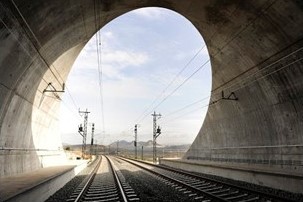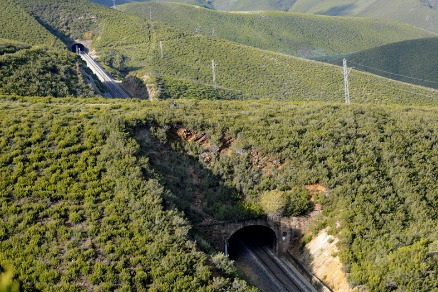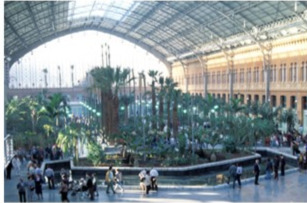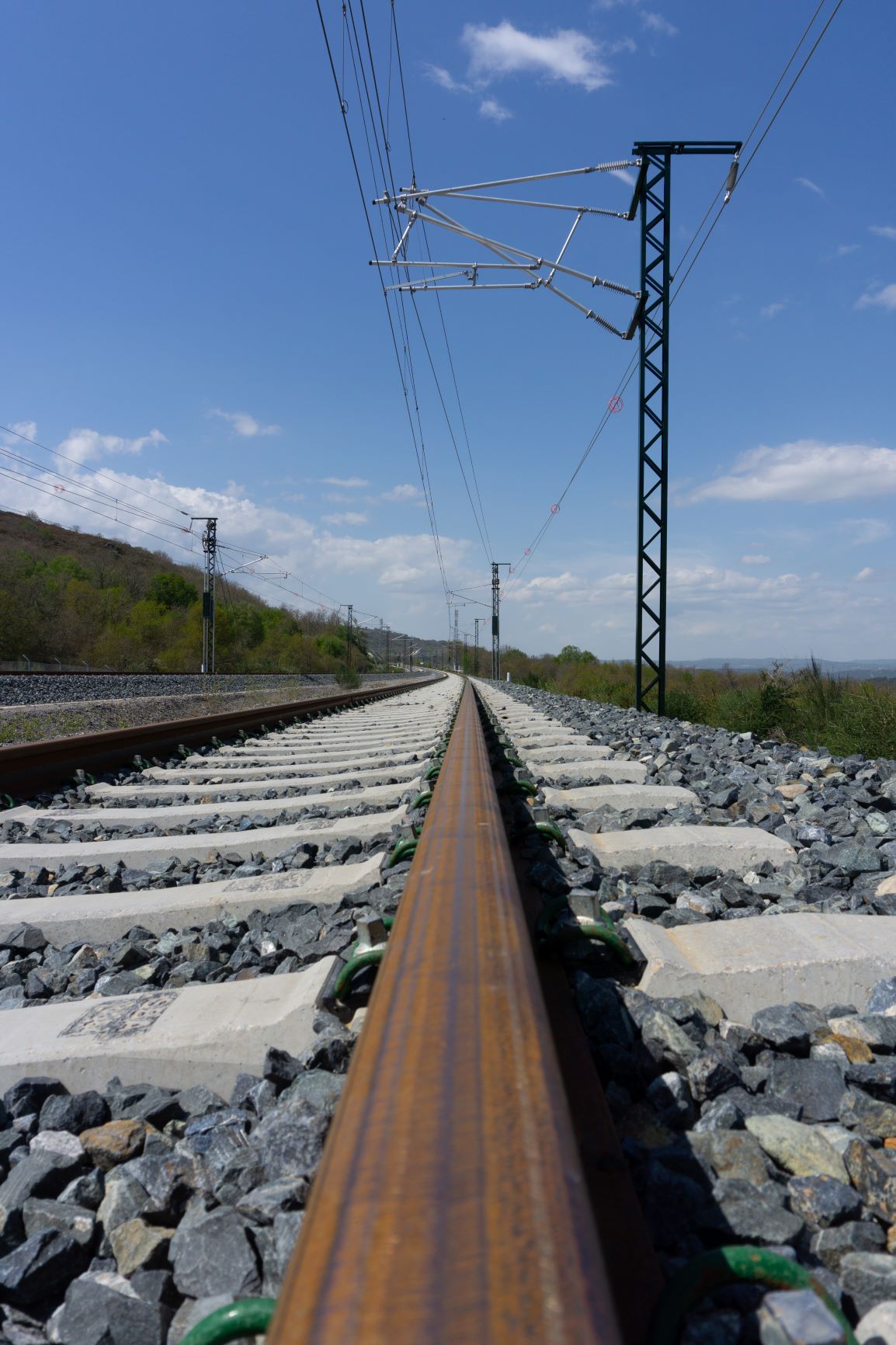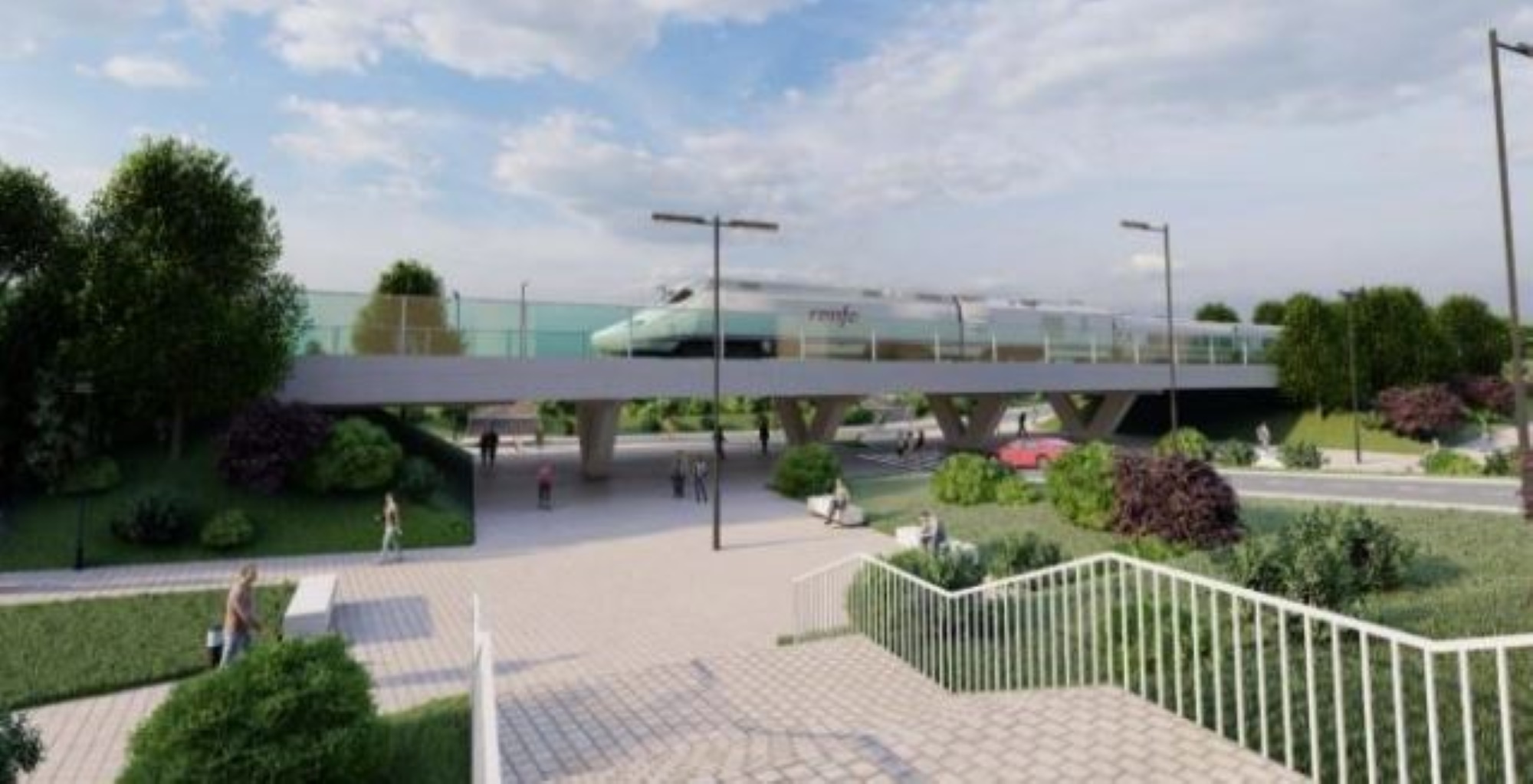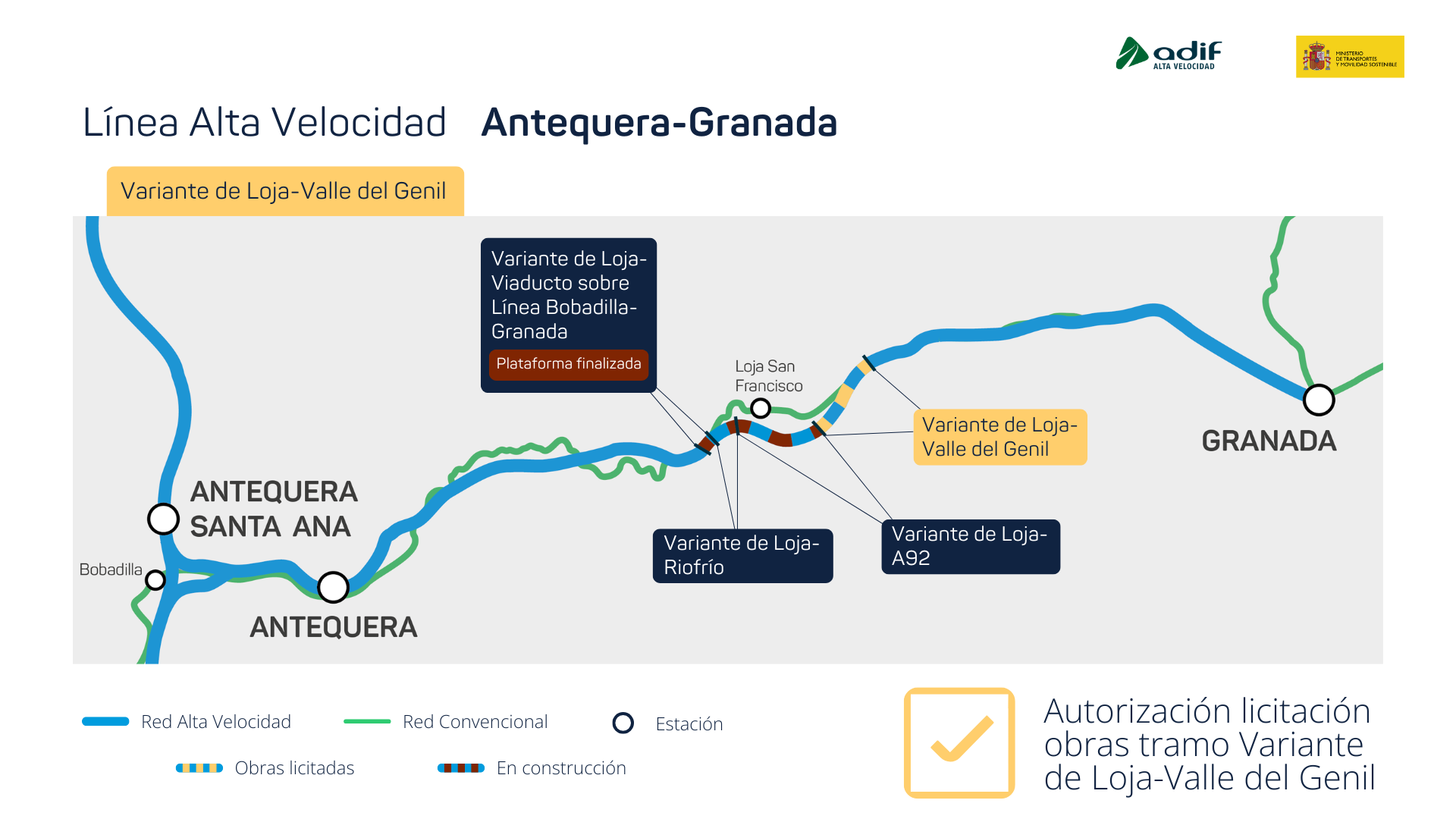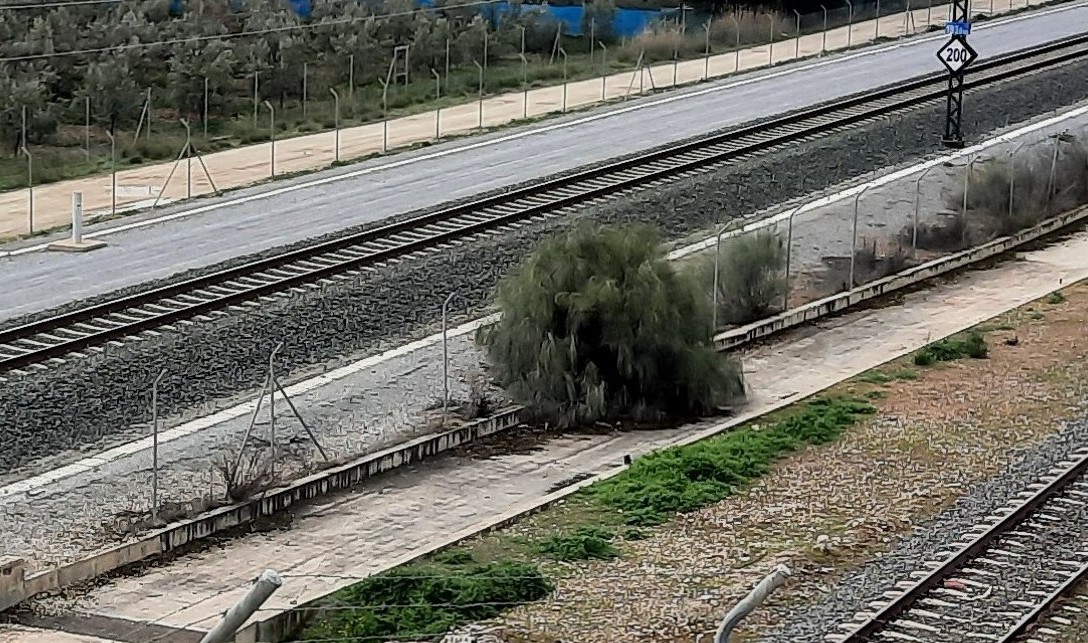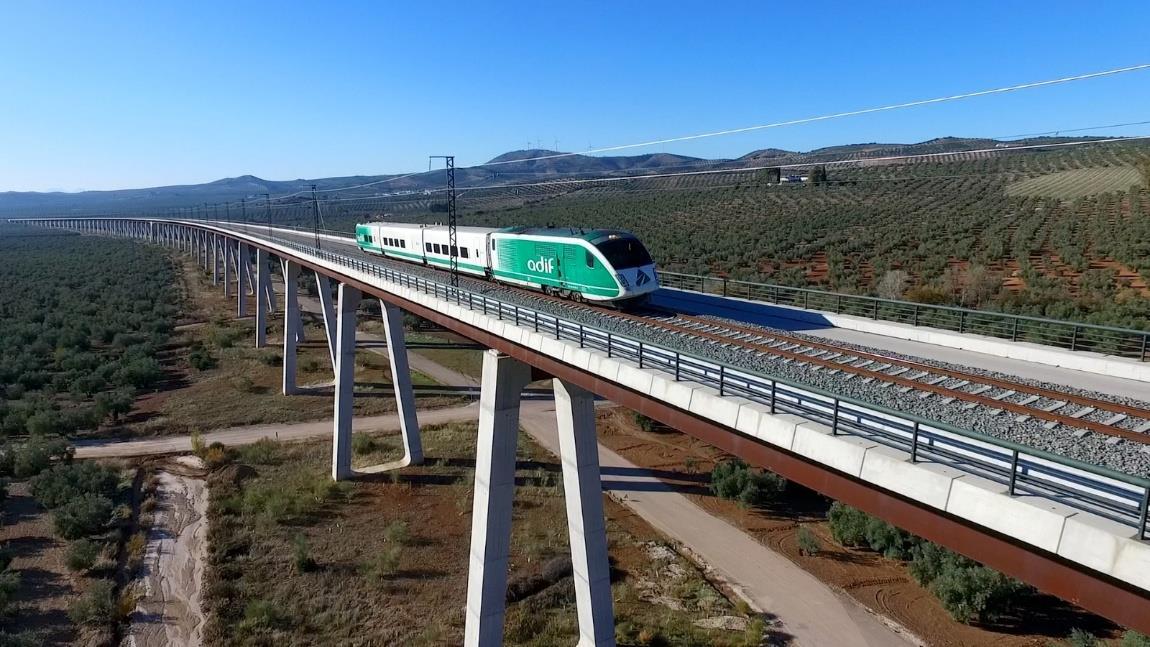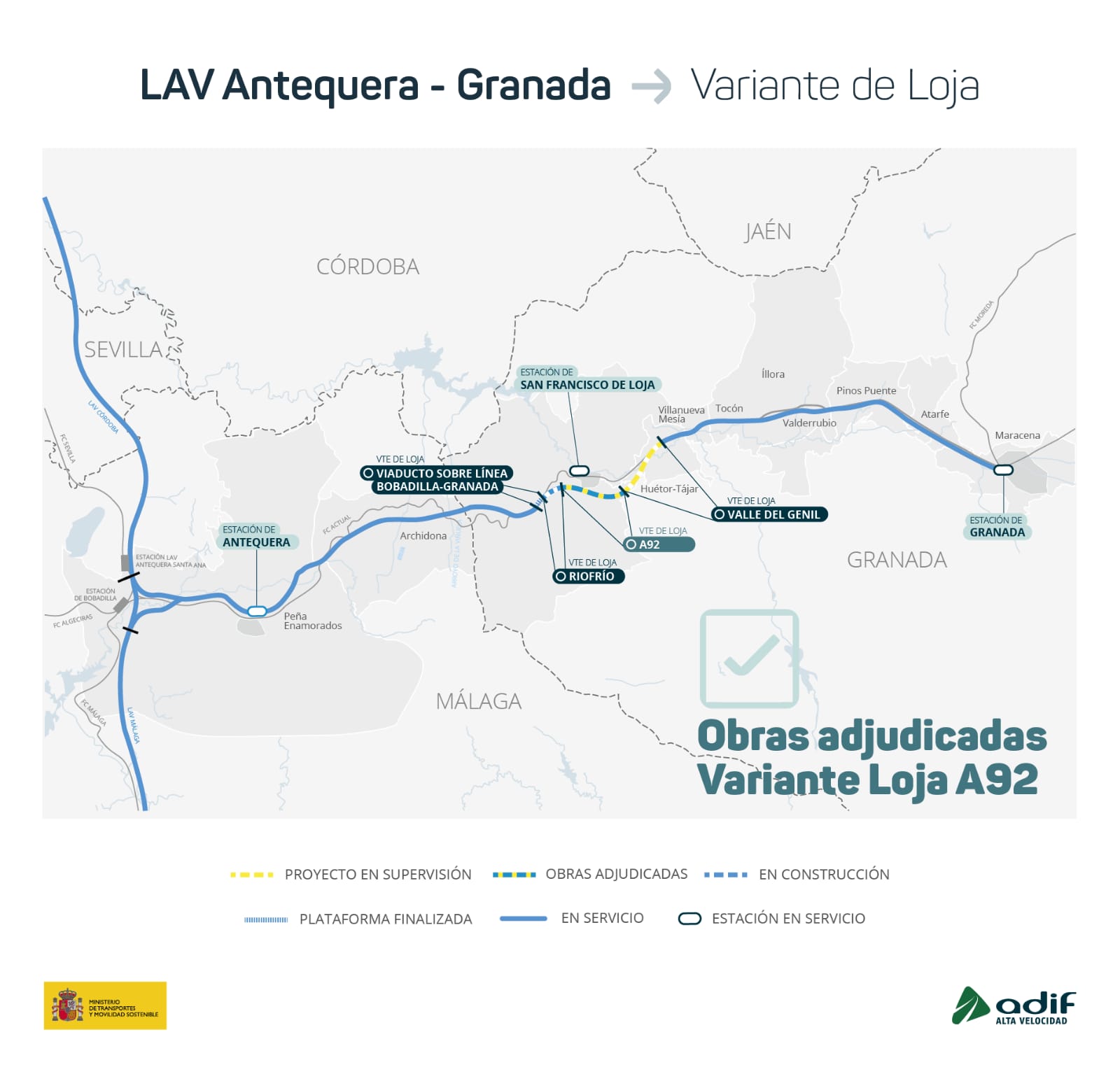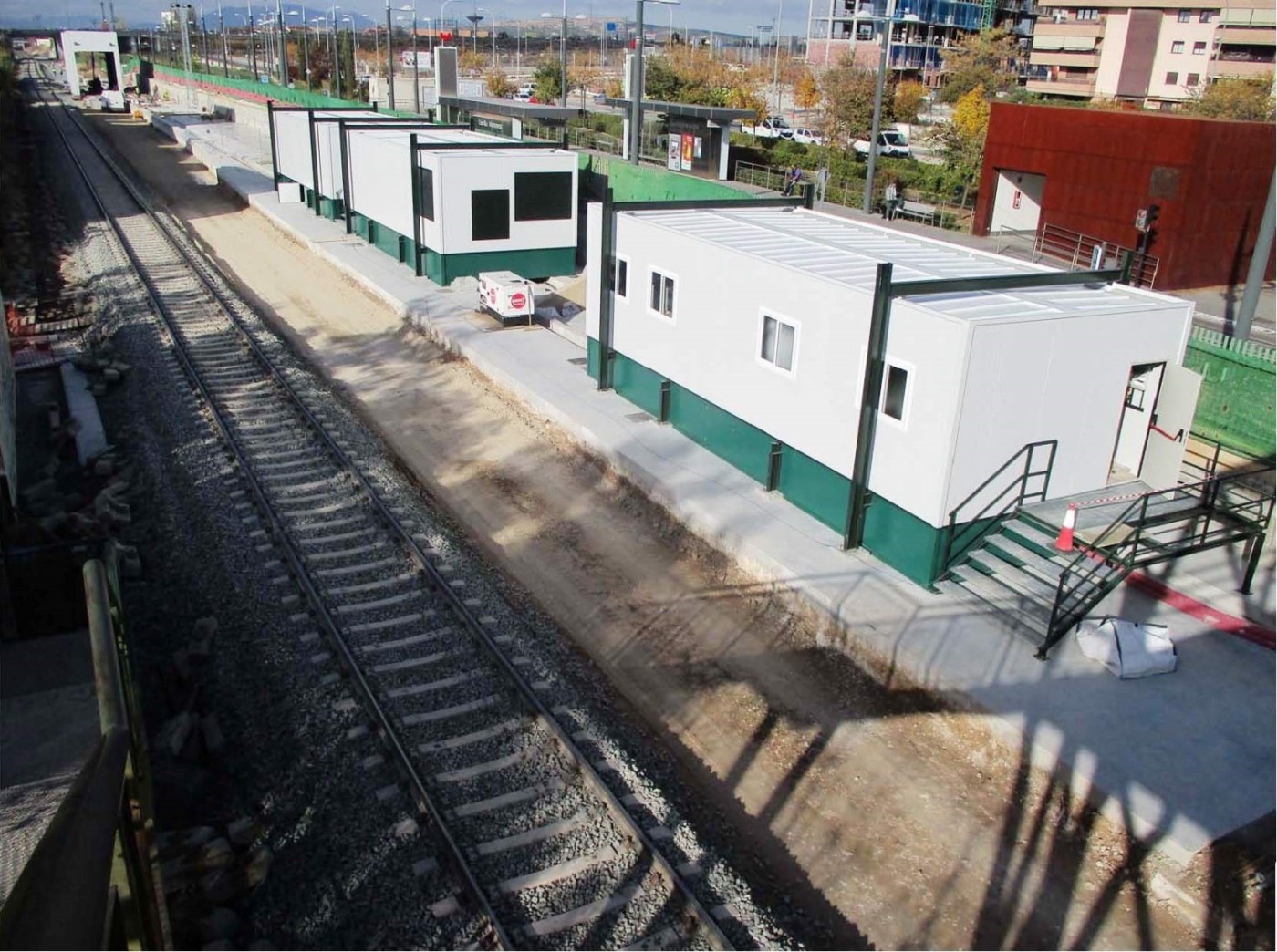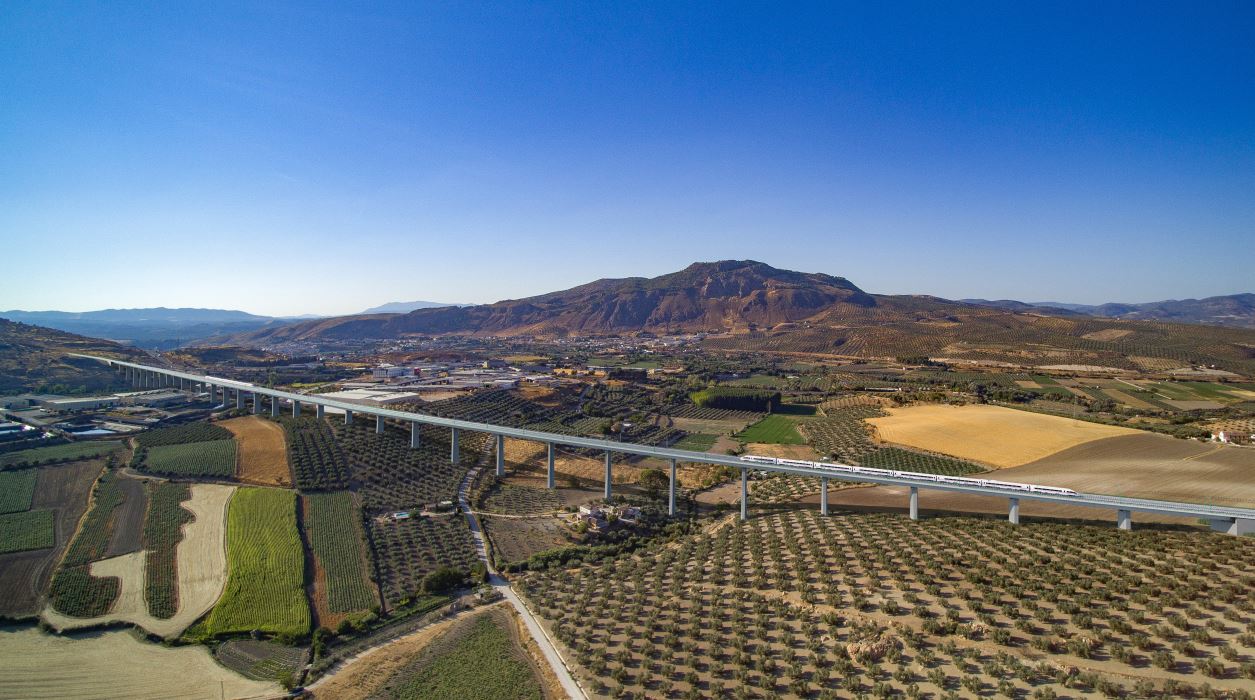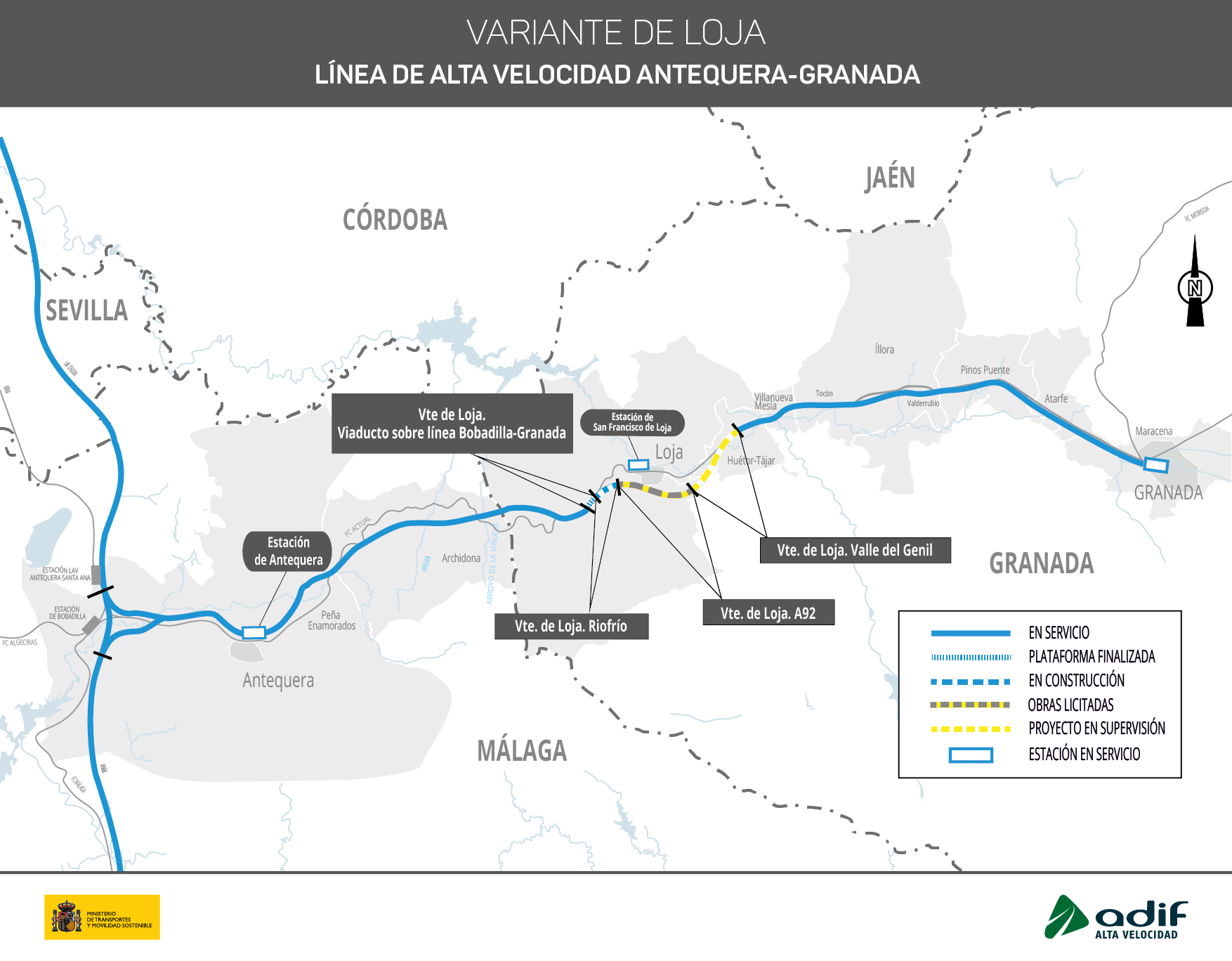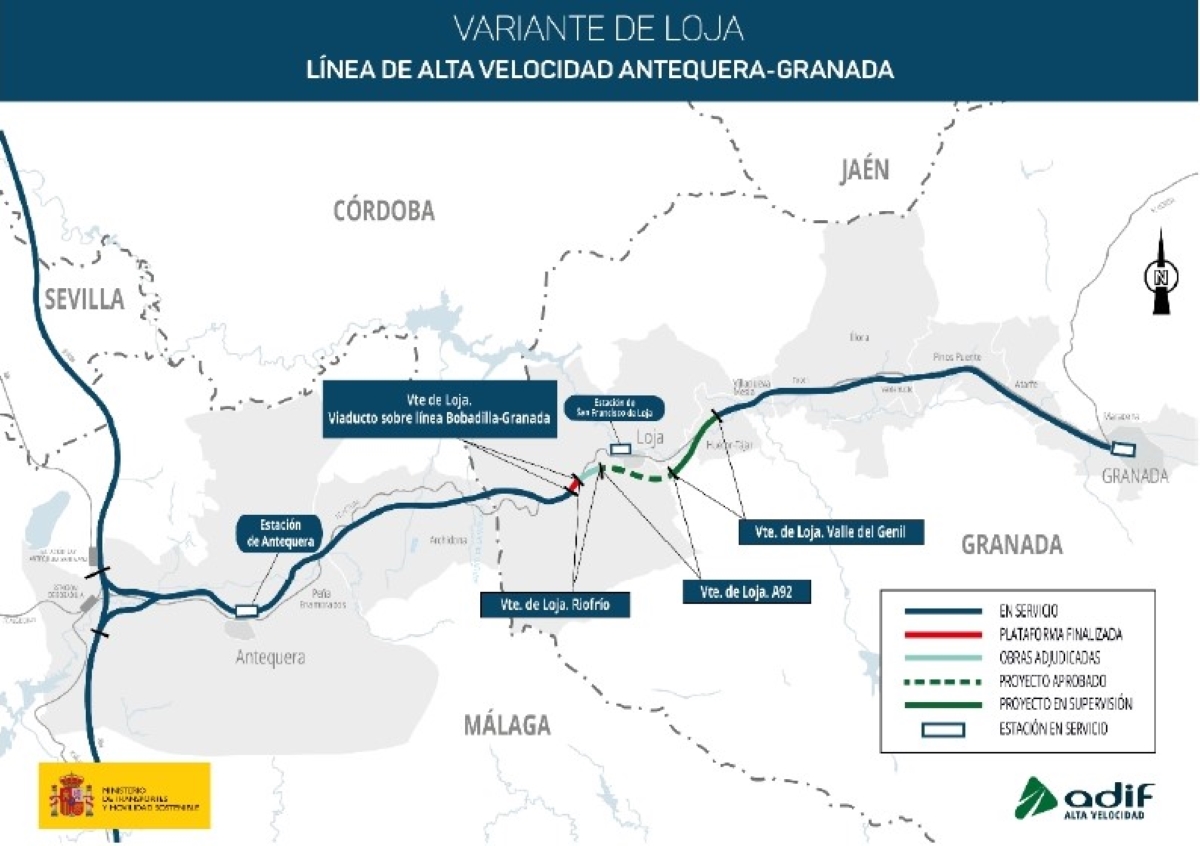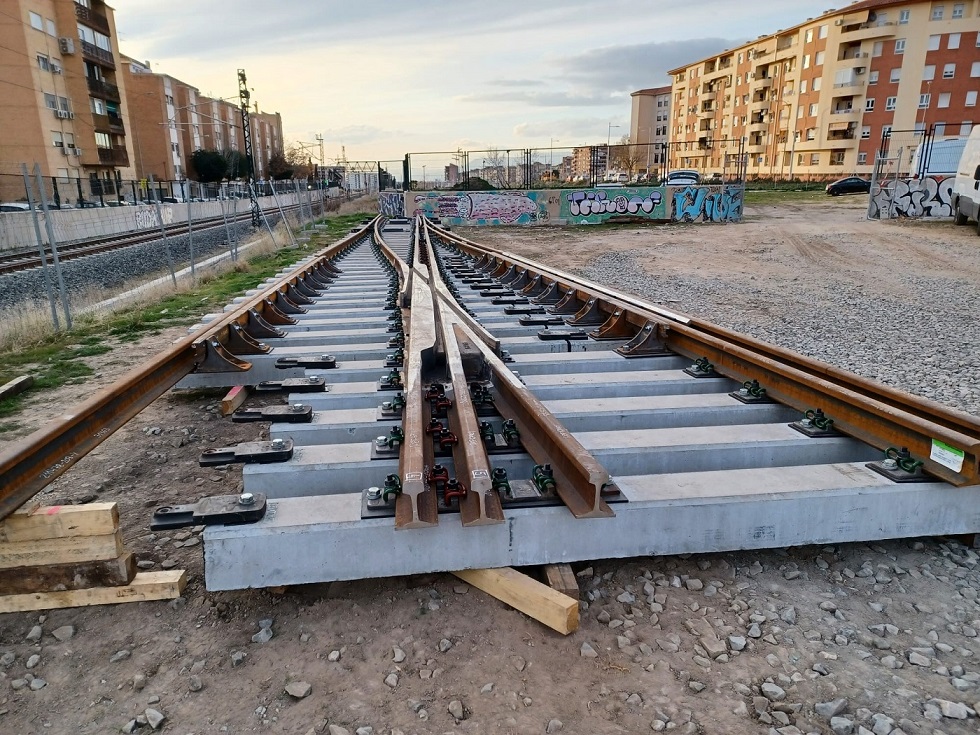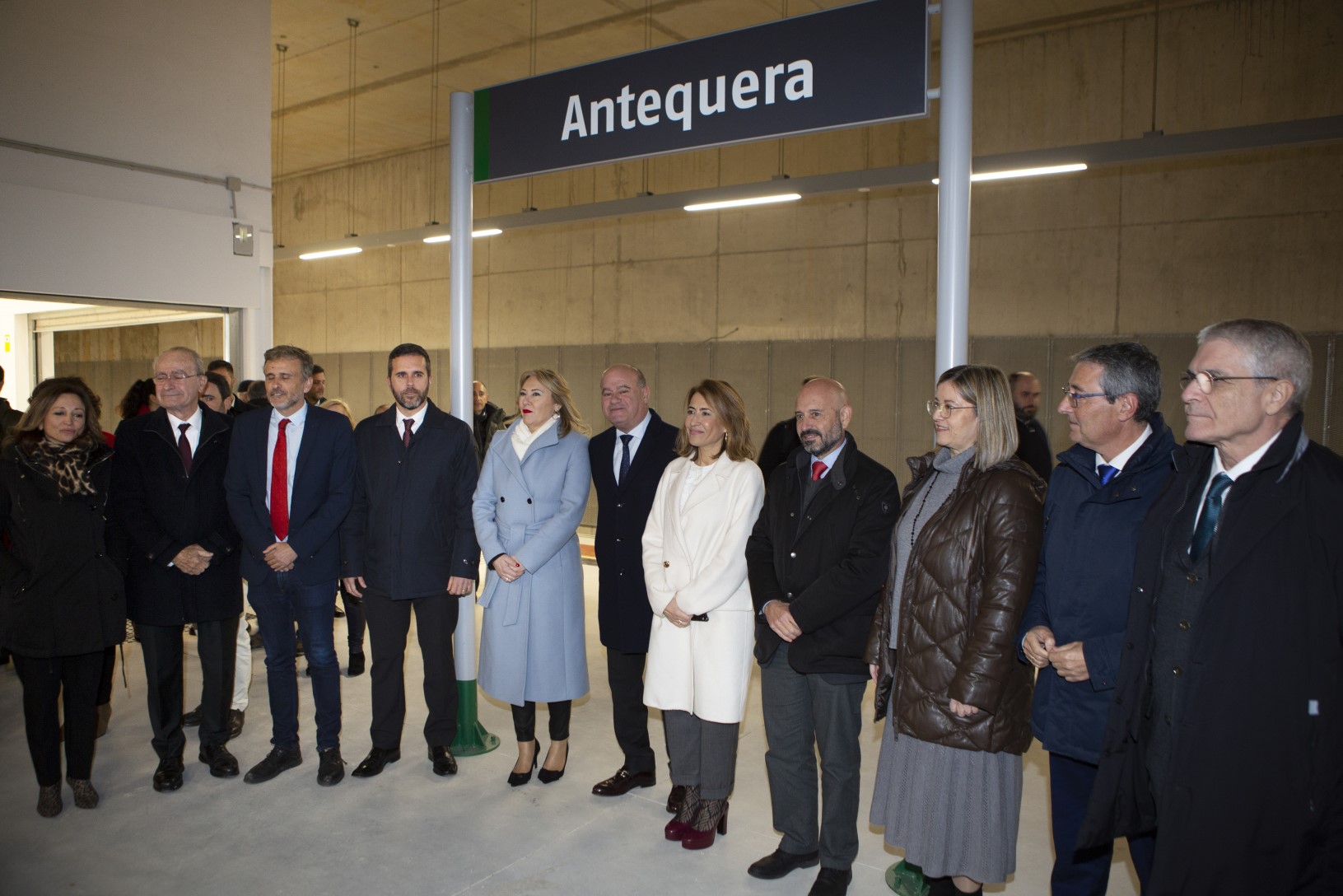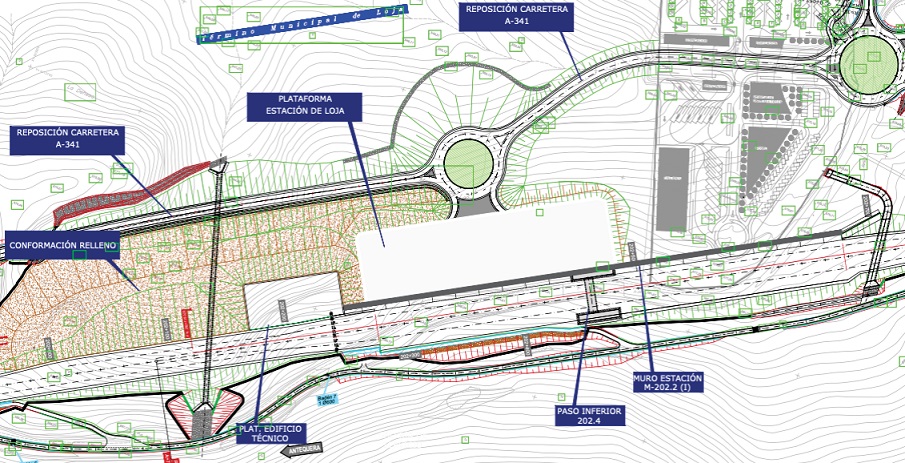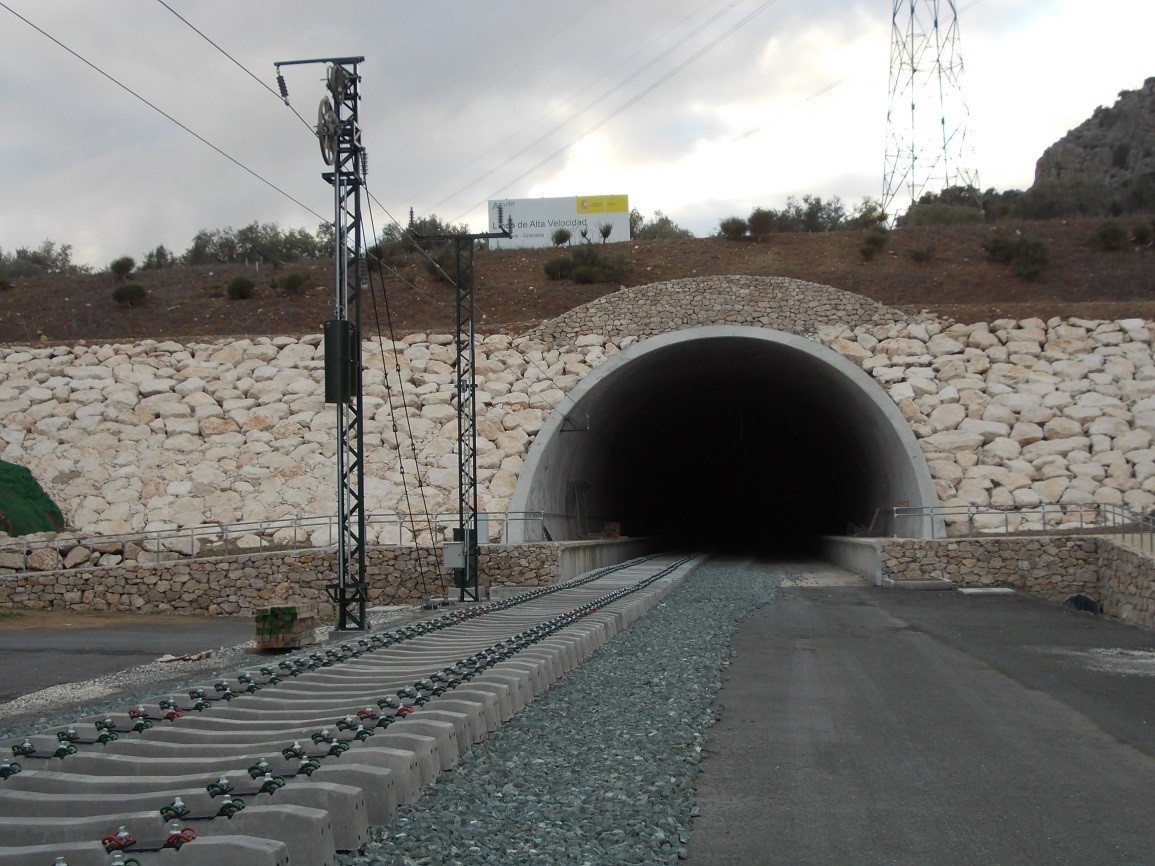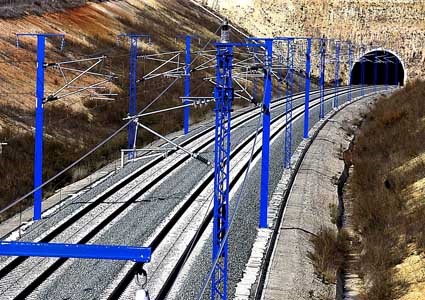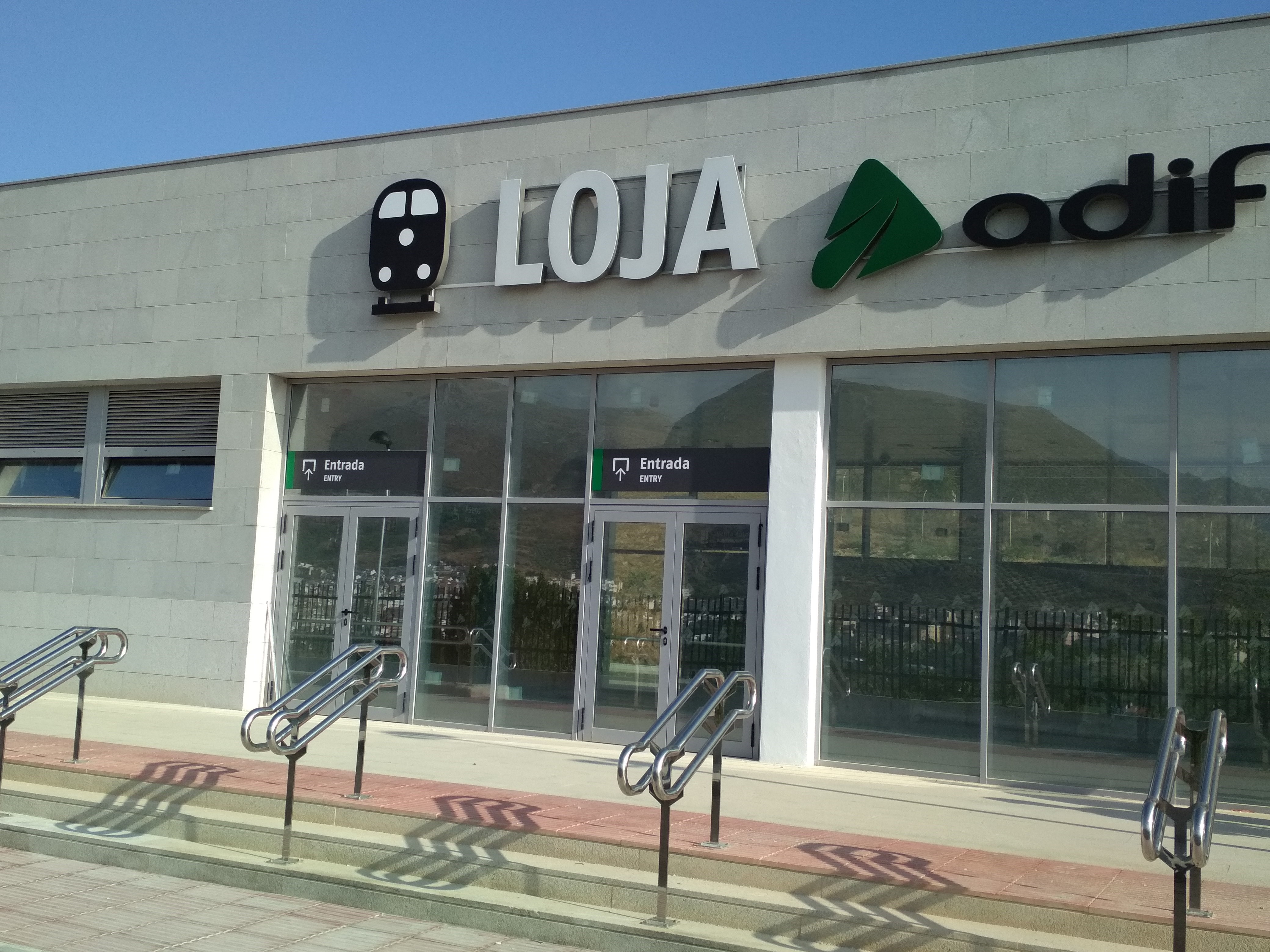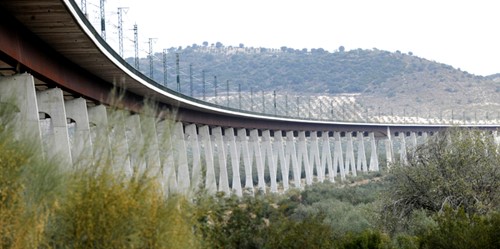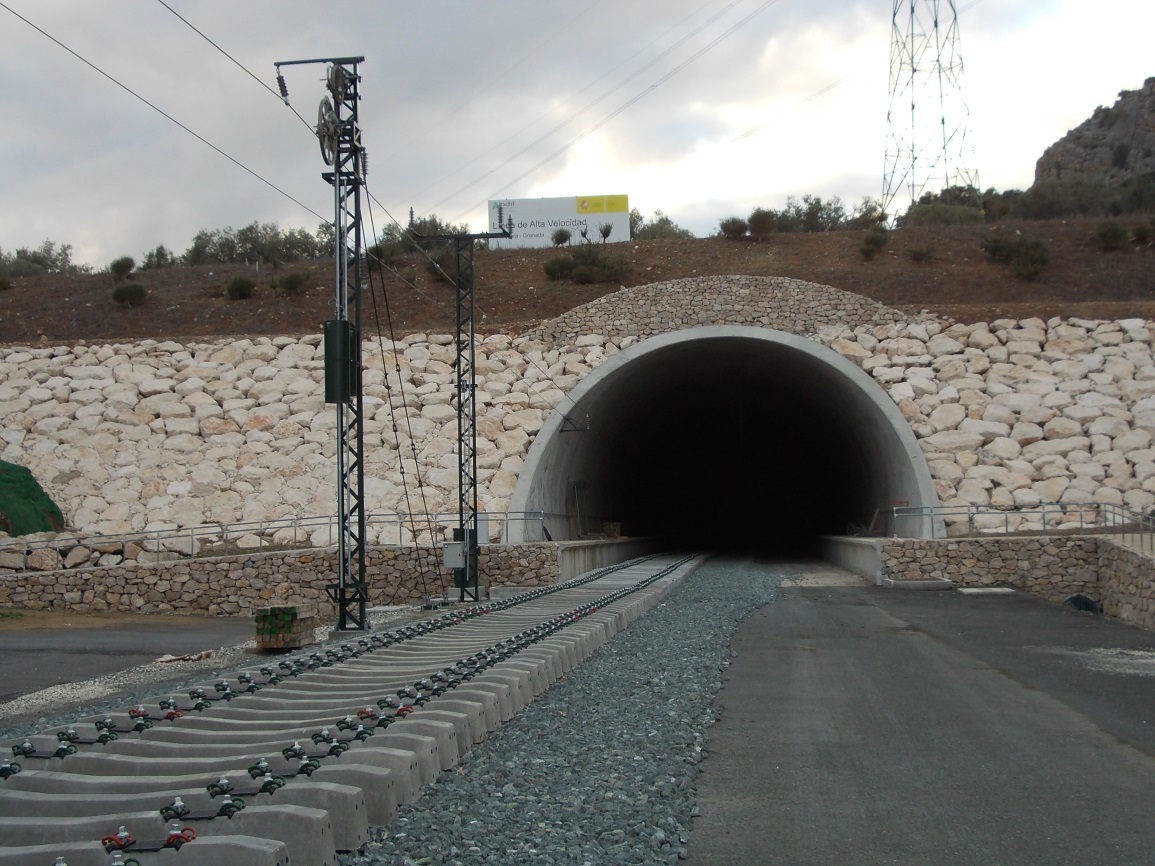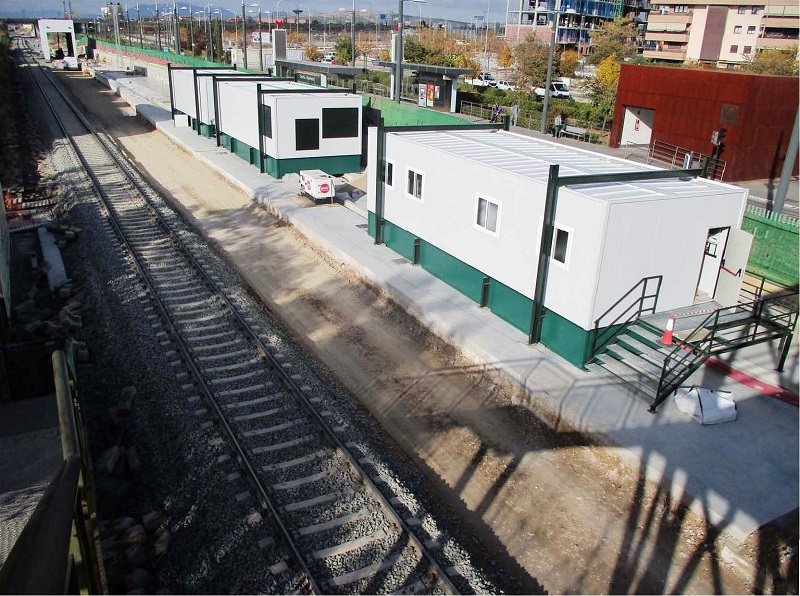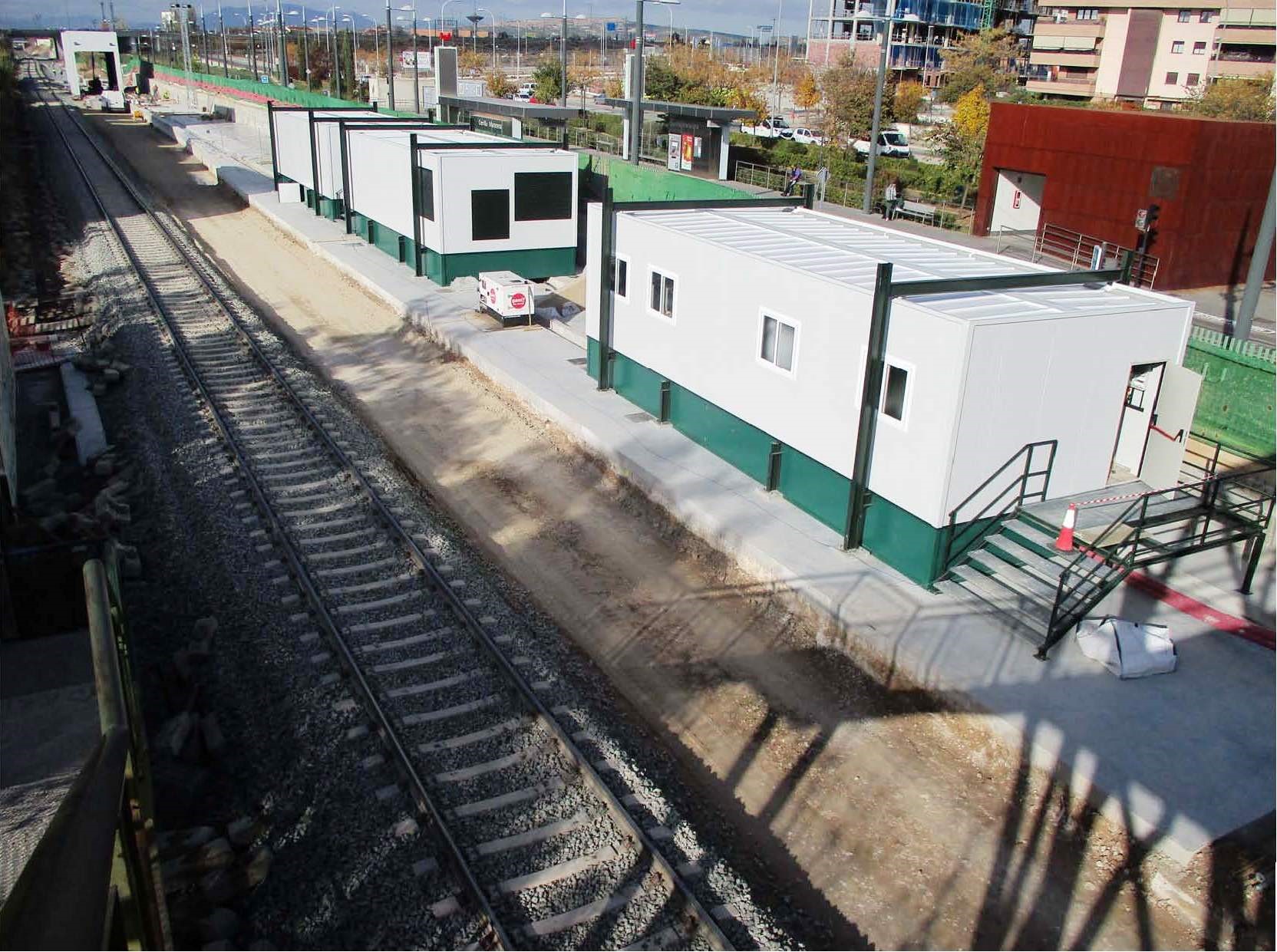Antequera-Granada Line
Andalusia transversal axis
Andalusia transversal axis
The high-speed Antequera-Granada line will form part of the Andalusia transversal axis.
The new line will provide a direct high-speed link between Granada, Malaga, Cordoba, Seville, Madrid and other Spanish cities, There will be significant savings in travel times between all these cities.
In addition to connecting Granada with the rest of the region, it will contribute, to a large extent, to strengthening and improving the internal development of Andalusia.
This high-speed line was inaugurated on 25 June 2019.
European Funding
"A way to make Europe"
Description of the line
The high-speed rail link starts near Antequera-Santa Ana station, forming a railway triangle to allow direct communication, via high-speed lines, between the cities of Granada, Malaga, Cordoba, Seville, Madrid and other Spanish cities, with a significant reduction in travel times. There are three stations, in Antequera, Loja and Granada.
The route runs through the Malaga municipalities of Antequera and Archidona and the Granada municipalities of Loja, Huétor-Tajar, Villanueva de Mesía, Íllora, Pinos Puente, Atarfe and Granada, running parallel to the A-92 motorway and through generally rugged terrain, making it necessary to build nearly 12 km of structures divided between 31 viaducts and seven tunnels totalling approximately 6 km. The viaduct over the Guadalhorce River and the A-92 in Antequera (2,525.5 m long), the Archidona Viaduct (3,150.5 m long), and the Quejigares Tunnel (twin-tube type, consisting of two parallel tunnels of 3,354.8 m and 3,378.2 m, respectively) are particularly unique.
ERTMS and back-up ASFA systems will be installed, with 3 signal boxes at Antequera AV, Íllora and Granada. The mobile telecommunications will be GSM R.
Environmental measures
The Ministry of Public Works and Adif-Alta Velocidad support sustainable and environmentally-friendly development, respecting protected natural spaces during the design, construction and operation of rail infrastructure.
The requirements of the Environmental Impact Statement (EIS) are also complied with, ensuring that all construction and infrastructure work is successfully integrated into the surrounding area and that all applicable environmental measures are implemented as effectively as possible.
- Construction of screening and settling systems for water from tunnels.
- Agricultural and landscape rehabilitation projects.
- Conservation of affected livestock routes.
- Measures to avoid affecting aquifers, such as the construction of the Archidona viaduct.
El seguimiento e investigación de yacimientos arqueológicos ha sido otro aspecto fundamental. Durante las obras de la LAV se han hallado importantes yacimientos de origen prehistórico y romano, algunas de cuyas piezas se exhiben en el Museo de Antequera:
- Yacimiento Arroyo Saladillo: En la provincia de Málaga se han hallado restos de un poblado prehistórico de finales del IV milenio a.C., datado en la transición del Neolítico al Cobre. Este hallazgo constituye el descubrimiento más relevante de las obras de la línea.
- Yacimiento Arroyo Villalta: Este yacimiento se extiende a lo largo de 14.200 m2, y alberga uno de los mayores complejos alfareros de toda la Cordillera Bética.
- Villa romana de Caserío Silverio-Mayorga: Los estudios arqueológicos realizados en la zona han descubierto, entre los restos hallados, varios mosaicos con inscripciones, además de dos pequeñas esculturas romanas, que destacan sobre el conjunto. También se ha desvelado a presencia de un edificio dedicado al culto cristiano (siglo VI d.C.).Por otra parte, y con la finalidad de preservar yacimientos localizados, conocida de antemano su existencia, se han adoptado soluciones constructivas para su preservación. Este es el caso del viaducto de 150 m de longitud para salvar el yacimiento arqueológico conocido como ‘El Tesorillo’, en el tramo Tocón-Valderrubio (Granada).
The longest is 3,150.5 metres
Conoce más de la línea
De entre los 31 viaductos y 7 túneles existentes en la línea, destacan los siguientes elementos singulares.
La Línea de Alta Velocidad posee tres estaciones en Antequera, Loja y Granada.


